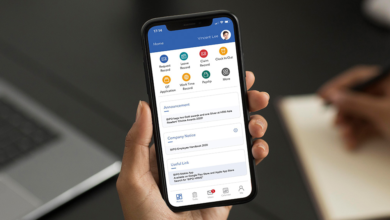Leveraging the NSE Option Chain for Straddle and Strangle Strategies: Capturing Significant Price Movements

The NSE (National Stock Exchange) Option Chain provides a versatile platform for options traders to employ various strategies, and among the most popular are the straddle and strangle strategies. These approaches are particularly effective for capturing significant price movements in the underlying asset. Let’s explore how traders can leverage the NSE Option Chain to implement straddle and strangle strategies and potentially capitalize on volatility in the market. Check what is demat?
Understanding Straddle and Strangle Strategies:
Straddle Strategy:
The straddle strategy involves buying both a call option and a put option with the same strike price and expiration date. This strategy is employed when traders expect a substantial price movement in the underlying asset but are uncertain about the direction.
Strangle Strategy:
The strangle strategy is similar to the straddle but involves buying an out-of-the-money call option and an out-of-the-money put option with different strike prices but the same expiration date. Traders use this strategy when they anticipate significant price movement but are unsure of whether it will be up or down. Check what is demat?
Execution on the NSE Option Chain:
Straddle Strategy Execution:
On the NSE Option Chain, a trader executing a straddle strategy would select a specific strike price and simultaneously buy both the call and put options at that strike. The trader aims to profit from a substantial move in either direction.
Strangle Strategy Execution:
For the strangle strategy, the trader would choose two strike prices—one for an out-of-the-money call option and another for an out-of-the-money put option. Both options would be purchased simultaneously on the NSE Option Chain.
Capturing Significant Price Movements:
Volatility as a Catalyst:
Straddle and strangle strategies thrive on volatility. When the market experiences significant price swings due to unexpected events, earnings releases, or other catalysts, these strategies aim to capitalize on the resulting price movements. Check what is demat?
Earnings Season Opportunities:
Earnings announcements often lead to heightened volatility in stock prices. Traders can leverage straddle and strangle strategies on the NSE Option Chain during earnings seasons to potentially benefit from the increased market activity.
Event-Driven Trading:
Straddle and strangle strategies are well-suited for event-driven trading. Traders can identify upcoming events with the potential to cause significant price movements and implement these strategies to capture the anticipated volatility. Check what is demat?
Factors to Consider:
Option Greeks Analysis:
Traders must analyze the Option Greeks, including Delta, Gamma, Theta, and Vega, to understand how changes in the underlying asset’s price, time decay, and volatility can impact the options’ values.
Strike Price Selection:
Careful consideration of strike prices is essential. Traders need to select strike prices that reflect their expectations for price movement while balancing the cost of the options.
Evaluating Implied Volatility:
Monitoring implied volatility on the NSE Option Chain is crucial. Higher implied volatility can increase option premiums, making these strategies more expensive but potentially more rewarding during significant price movements. Check what is demat?
Conclusion:
Leveraging the NSE Option Chain for straddle and strangle strategies is an effective way for options traders to position themselves to capture significant price movements in the market.





